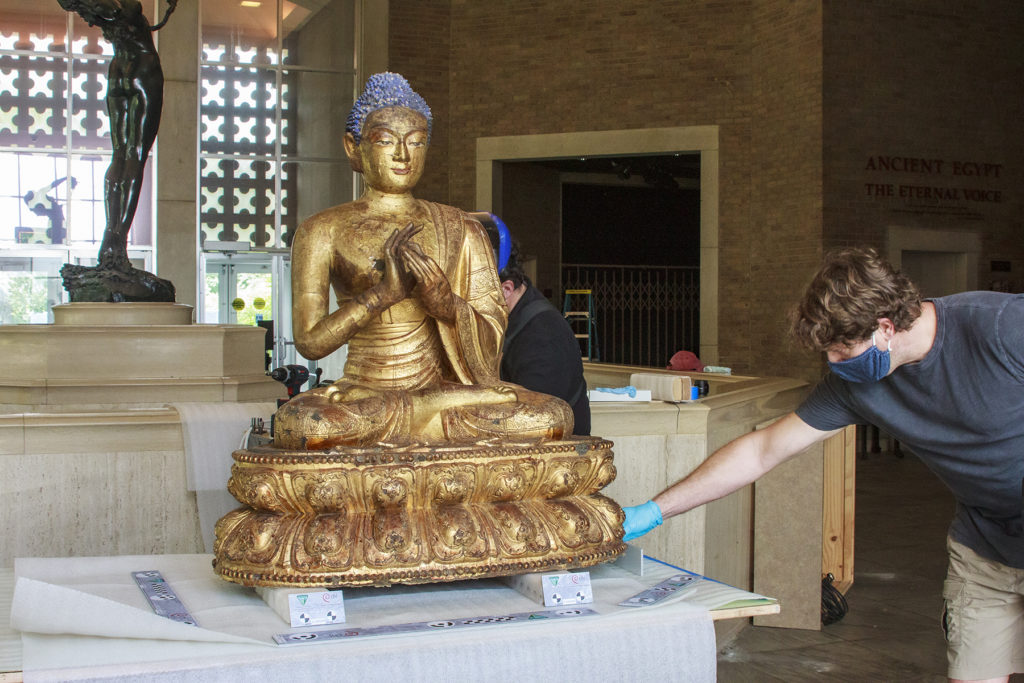
Museum staff move a delicate Chinese Buddha figure (2013.6.1) as part of efforts to reinstall collections.
When the McClung Museum was forced to close in March 2020 due to Covid-19, staff quickly identified two major opportunities: to use the closure as an opportunity to update outdated galleries, and to seize global and staff calls for a focus on equity, diversity, and inclusion in museums.
As you might know, we identified some of the specific work that we wanted to do in the museum’s recent Black Lives Matter Memo. Those action steps are now posted on our website.
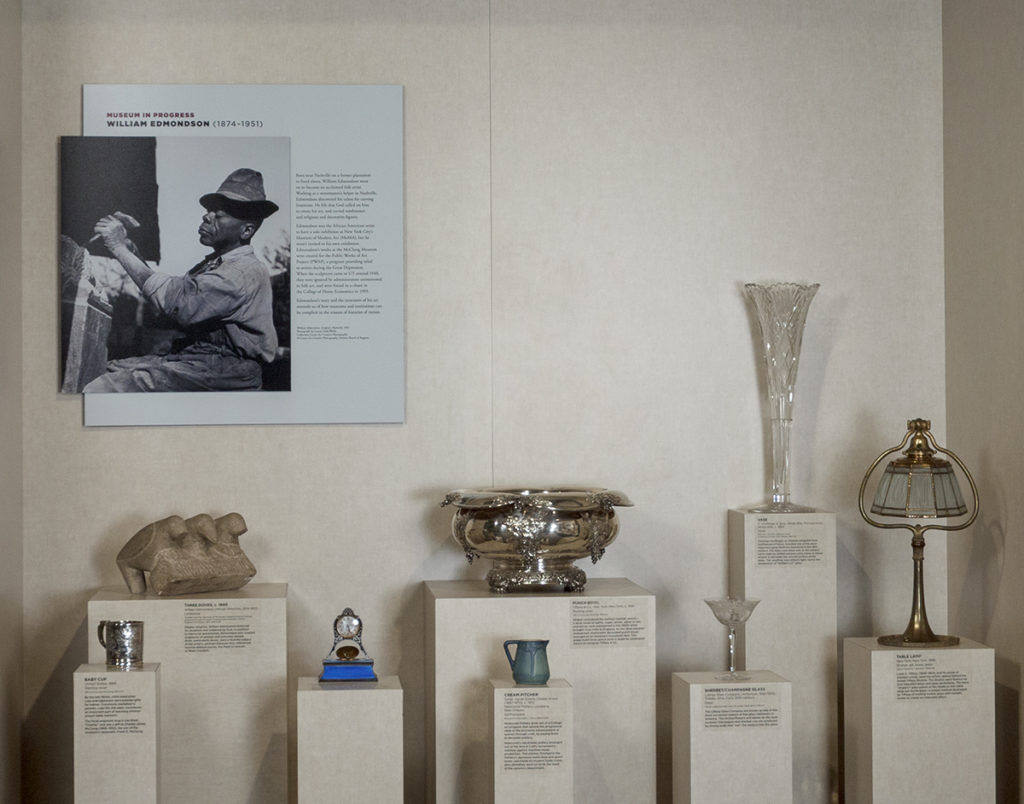
A new didactic panel in the museum’s Decorative Arts gallery tells the shocking story of how the sculpture William Edmondson, an important African American artist, was relegated to a closet at UT for many years.
One of the action items on our list is “Continue to highlight and incorporate traditionally-excluded voices through our exhibitions with a renewed and on-going focus.”
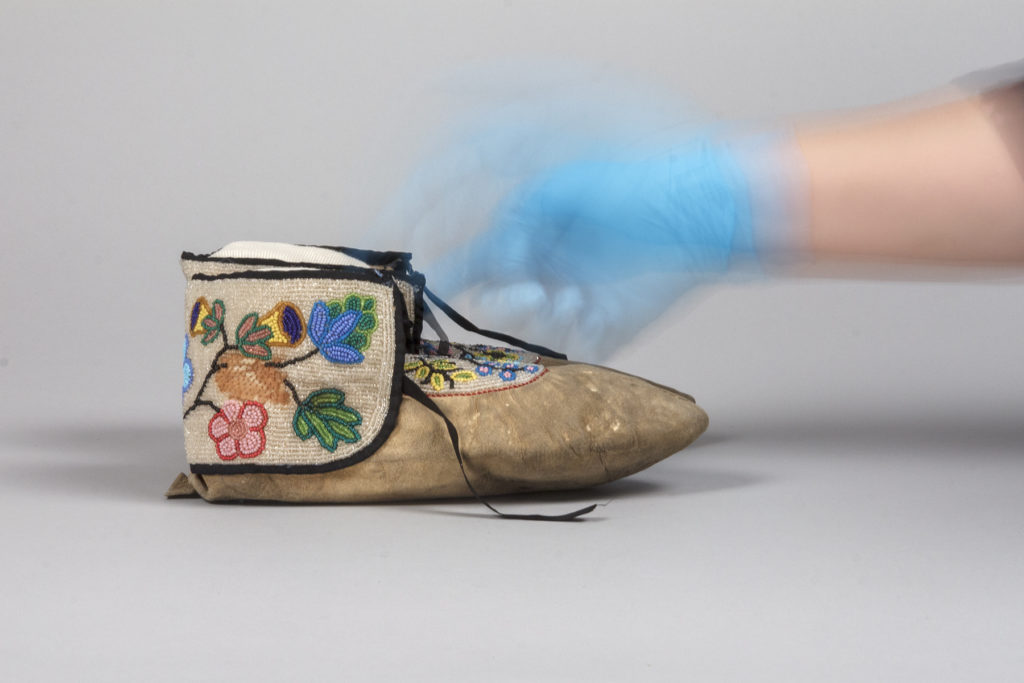
A pair of beautifully beaded moccasins (2006.8.3) is prepared for photography and digitization as a part of the museum’s efforts to make collections more accessible and fully catalogued.
While the museum hopes to eventually implement additional large scale renovations of its permanent galleries, many of which are several decades old, our present budget does not allow for this. However, by implementing strategic changes to our existing galleries and the public spaces, we will be able to provide a refreshed appearance and experience for museum visitors.
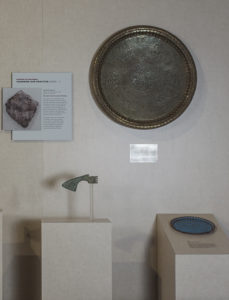
A new didactic panel explains why an object that was looted in the 19th century has been removed from display.
Since March 2020, staff have taken off view dozens of objects that needed to rest or required conservation after many years on display, installed new objects, and re-written labels in our Decorative Experience gallery. However, there are also philosophical and ethical issues in our galleries that must be addressed. For example, the voices of indigenous artists and artists of color have often been missing from museum narratives. Other issues include a lack of contemporary art and perspective on indigenous cultures from around the world, and the need to address that some objects collected in the 19th century were looted from archaeological sites.
If you come and visit our galleries, you’ll see some of these stories and issues highlighted on didactic panels throughout the Decorative Experience. We plan on adding more in the upcoming months to highlight missing stories about indigenous artists and leaders; make physical changes to our space to make it more welcoming and accessible; and address ethical issues that come up with museum collecting and display.
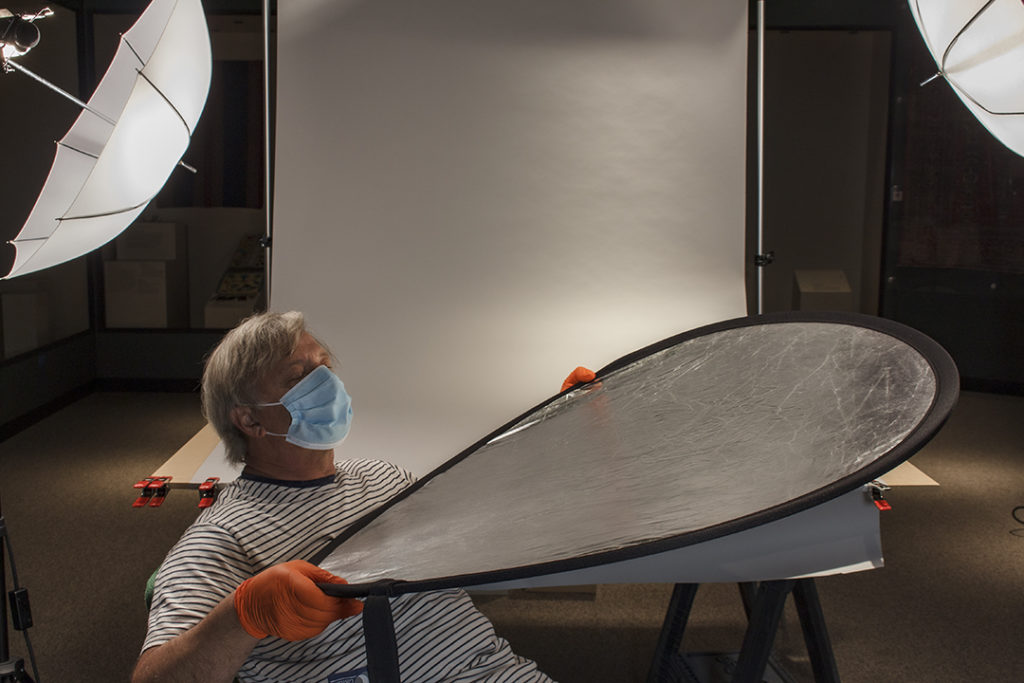
Museum Graphic Designer and Media Coordinator, Tom Shirtz, hard at work on a new photography setup to help digitize museum collections.
We also will be embarking on a plan to switch out signage in the museum to help clearly label museum research lab areas, offices, and restrooms, and provide general way-finding throughout the building. The museum, which was opened to the public in 1963, includes general signage in a variety of formats and styles from many different time periods. Visitors have indicated that both a lack of signage and the varied signage is confusing. So, please look out for these exciting changes, which are part of our own internal “Museum in Progress” project, inspired by Hannah Mason-Macklin’s work of the same name at the Columbus Museum of Art.
In the meantime, we welcome your feedback on our exhibitions, these changes, and anything else that the museum can do to make our museum more welcoming and accessible to you!